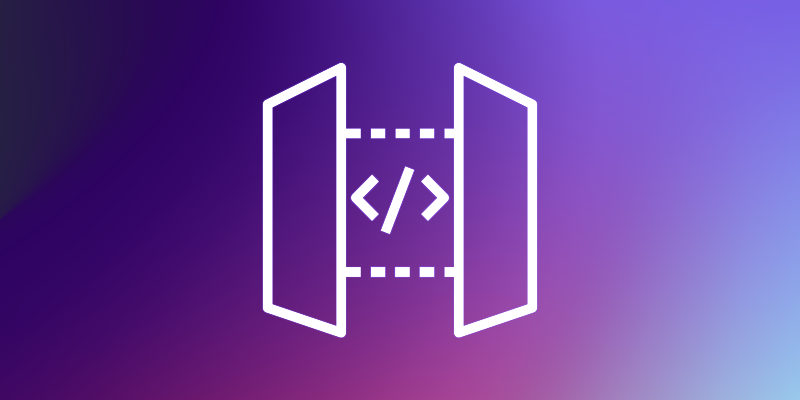Amazon API Gateway Now Supports IPv6 for Enhanced Connectivity
In a major update, Amazon Web Services (AWS) has announced that its Amazon API Gateway now supports IPv6 across all endpoint types, custom domains, and management APIs. This update is available across all commercial regions as well as AWS GovCloud (US) Regions. With this enhancement, users can now configure REST, HTTP, and WebSocket APIs, alongside custom domains, to accept requests from clients using IPv6, in addition to the existing IPv4 support. Moreover, API Gateway management APIs can now be accessed from clients using a dual-stack configuration, which supports both IPv4 and IPv6.
Understanding the Need for IPv6
The adoption of IPv6 is becoming increasingly important as organizations face the challenges of IPv4 address depletion and rising associated costs. By transitioning to IPv6, organizations can future-proof their network infrastructure, ensuring compatibility with emerging technologies and expanding their global connectivity. This dual-stack approach allows organizations to maintain their current IPv4 infrastructure while gradually integrating IPv6, facilitating a smoother transition.
For more in-depth information about dual-stack configurations within the AWS ecosystem, you can refer to the IPv6 on AWS documentation.
Creating New Dual-Stack Resources
AWS provides two primary methods for creating APIs or domain names with dual-stack IP address configurations: using the AWS Management Console or utilizing the AWS Cloud Development Kit (CDK).
Using the AWS Management Console
When creating a new API or domain name through the AWS Management Console, users have the option to select either IPv4 only or a dual-stack configuration (supporting both IPv4 and IPv6) for the IP address type. This choice ensures flexibility in managing network configurations.
For instance, when creating a new REST API, users can select the dual-stack option, as illustrated in the accompanying diagram. Similarly, custom domain names can be configured to support dual-stack configurations, enabling seamless integration with existing infrastructure.
If at any point there is a need to revert to IPv4-only due to specific requirements, this can be done by adjusting the IP address type setting without the need to redeploy the API, ensuring minimal disruption to services.
It’s worth noting that REST APIs of all endpoint types, including EDGE, REGIONAL, and PRIVATE, are compatible with dual-stack configurations. However, PRIVATE REST APIs specifically support dual-stack configurations.
Leveraging the AWS Cloud Development Kit (CDK)
For those utilizing the AWS Cloud Development Kit (CDK), configuring a dual-stack REST API and domain name is straightforward. For example, the following code snippet demonstrates how to create a REST API with a dual-stack configuration:
javascript<br /> const api = new apigateway.RestApi(this, "Api", {<br /> restApiName: "MyDualStackAPI",<br /> endpointConfiguration: {ipAddressType: "dualstack"}<br /> });<br /> <br /> const domain_name = new apigateway.DomainName(this, "DomainName", {<br /> regionalCertificateArn: 'arn:aws:acm:us-east-1:111122223333:certificate/a1b2c3d4-5678-90ab',<br /> domainName: 'dualstack.example.com',<br /> endpointConfiguration: {<br /> types: ['Regional'],<br /> ipAddressType: 'dualstack'<br /> },<br /> securityPolicy: 'TLS_1_2'<br /> });<br /> <br /> const basepathmapping = new apigateway.BasePathMapping(this, "BasePathMapping", {<br /> domainName: domain_name,<br /> restApi: api<br /> });<br />
This code snippet outlines how to set up both a REST API and a custom domain name with dual-stack capabilities using AWS CDK, ensuring compatibility with both IPv4 and IPv6 clients.
Managing IPv6 Source IP and Authorization
As organizations begin receiving IPv6 traffic, it’s crucial to ensure that client source IPs are recognized in IPv6 format. For those using resource policies, Lambda authorizers, or AWS Identity and Access Management (IAM) policies that reference source IP addresses, updates must be made to accommodate IPv6 addresses.
Here’s an example of how to permit traffic from a specific IPv6 range using a resource policy:
json<br /> {<br /> "Version": "2012-10-17",<br /> "Statement": [<br /> {<br /> "Effect": "Allow",<br /> "Principal": "*",<br /> "Action": "execute-api:Invoke",<br /> "Resource": "execute-api:stage-name/*",<br /> "Condition": {<br /> "IpAddress": {<br /> "aws:SourceIp": [<br /> "192.0.2.0/24",<br /> "2001:db8:1234::/48"<br /> ]<br /> }<br /> }<br /> }<br /> ]<br /> }<br />
Summary of Benefits
The introduction of dual-stack support in the API Gateway marks a significant step forward in addressing the challenges of IPv4 address scarcity and managing associated costs. This update not only aligns with government and industry mandates but also prepares organizations for the future of networking with a smooth transition path. By supporting both IPv4 and IPv6 clients simultaneously, AWS ensures that users can maintain compatibility with existing systems while embracing future networking technologies.
For those interested in getting started with API Gateway dual-stack support, detailed guidance is available in the Amazon API Gateway documentation. This resource provides comprehensive instructions for configuring dual-stack for new APIs or updating existing APIs with minimal configuration changes.
This update underscores AWS’s commitment to providing innovative solutions that equip organizations to navigate the evolving digital landscape seamlessly. By integrating IPv6, AWS not only enhances its service offerings but also empowers users to expand their network capabilities and reach new heights in global connectivity.
For more information and insights, you can visit the original announcement on AWS’s official website.
For more Information, Refer to this article.


































